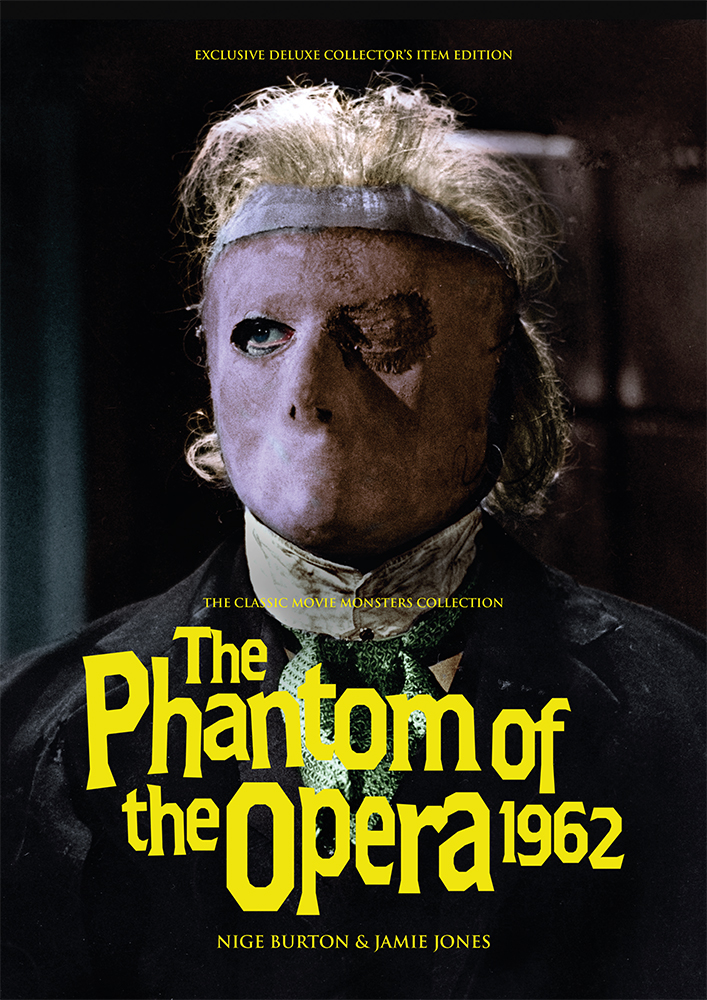

However, as having full makeup as well as the mask would make expression and singing difficult for the lead actor, and thus they halved it, via Maria Bjornson's inovative design. The original intent was to have full facial deformity and thus a full mask, similar to the one seen in posters and promotional material for the musical. This version, aside from the Lon Chaney movie, is the most well-known version of the Phantom story, and the Phantom's white half mask is an iconic image that people tend to think of when someone mentions The Phantom of the Opera. With the white base mask, he possesses a gold Apollo mask that he wears while teaching Christine, a black mask he wears during moments of rage, a skull mask that he wore while Joseph Buquet was snooping around in the cellars, causing him to get scared and fall to his death, and a crying clown mask with black tears that he wears when he believes Christine will not return to him.
#THE PHANTOM OF THE OPERA TV#
The 1990 Charles Dance TV miniseries had Erik wearing multiple masks on top of a plain white base mask, and Erik's deformed face is never shown on camera. In the modern day, Destler wears false prosthetic faces, making him look completely normal.Įrik on the DVD cover, wearing the white base mask. At the masked ball, he wears a simple skull mask with his Red Death costume. Destler disguises this with a wig, false teeth, and sews flesh to his face, obtained from his victims, covering the stitches with makeup. Erik Destler made a deal with the devil that people would love him for his music and it would live forever, but that his music wouldĭestler applying flesh pieces to his face.īe the only thing he would be loved for, and as a result, his face was mutilated, missing his hair, teeth, nose, and one ear. Robert Englund's Phantom in the 1989 film had a very grotesque variant of the mask. In the 1986 Maximillian Schell version, this version of the Phantom wears both a stone-gray mask that resembles a statue's face, as well as a mask that remembles his face prior to his disfiguration, once again by acid, though strangely enough his unmasked face looks similar to Lon Chaney's skull-like deformity, looking nothing like an acid disfiguration. Strangely enough, this helmet also has a black lens over the right eye hole, conveniently covering Winslow's damaged eye. Winslow hides his scarred face with a silver owl-themed helmet/mask. In Brian De Palma's Phantom of the Paradise, Winslow Leach becomes the Phantom after getting his face caught in a record press that mutilates half of his face and renders his right eye useless as a result. He wears this mask during most of the film, only removing it in a few scenes toward the ending. In the 1962 Hammer Horror version, this Phantom, like the Claude Rains version, had his face scarred by acid, and wore a white cloth mask that hid his entire face, save for one eye. The Phantom's mask in the Herbert Lom Hammer Horror version. Erique's mask is seen next to his violin on a pile of rubble after his supposed death. The mask also serves as a disguise when the Phantom sneaks about on-stageĭuring a production where the actors wore similar masks.

In Universal's 1943 remake starring Claude Rains, Erique Claudin wears a bluish-white mask that covers 3/4 of his face, stolen from the Opera House's costume closet after his face was disfigured by acid. However, Erik is hardly seen with his mask on, mostly keeping his deformed face in view of the audience. He also wears a cap with this mask, making him resemble a regular Middle Eastern man when masked. In Lon Chaney's 1925 silent classic, Erik wears a unique mask,one that rese bles a normal face with a dust muffler u nder the nose. The Mask in other versions of the story 1925 Lon Chaney silent film Erik also mentions at the end of the book that he had invented a mask that made him look like he wasn't deformed. Susan Kay's Phantom has the same deformity, although has Erik wearing a white mask instead of a black one. He also wears a false nose when attending the Opera's productions, A similar black mask appears as one of many masks Erik wears in the Charles Dance version, specifically when Erik is in a malevolent mood, such as when he dumps a crate full of rats into Carlotta's dressing room. Erik wears a black mask that hides his entire face, and the original cover of the novel depicts Erik wearing a simple black domino mask that hides 3/4 of his face. In the Leroux book, Erik mentions having worn a mask even as a child, because his mother couldn't bear to look at his skull-like face. 2 The Mask in other versions of the story.


 0 kommentar(er)
0 kommentar(er)
